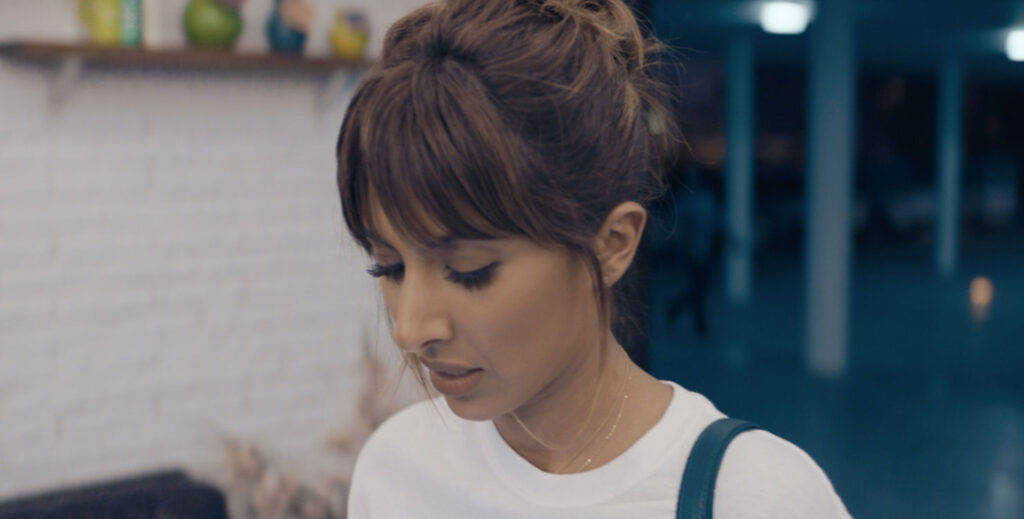
A close-up shot is a photograph or shot taken of a subject or object at close range intended to offer the viewer more detail on the subject. The imagery in the frame should be identifiable. When the close-up is used on an actor, it creates a more critical emotional connection between your audience and the subject or object featured in the shot.
A close-up shot makes the audience understand that whatever is in the frame, is an important subject – whether prop or reaction. Often, close-up shots are best used when the subject or object has a significant influence on the story.
A close-up shot is one of the most commonly used film and television shot types, but there are many ways out there to make your close-ups extraordinary. It could be when you’re using it in your story or how you angle your camera to generate an even more astounding effect on the audience, or even, by surrounding the shot with other varying shot types. In this post, we hope to break this shot down for you.
One of the film director’s most important jobs is to tell a story that makes their audience feel something. Whether it’s happy, sad, moved, or scared, the close-up shot helps both actors and directors convey deep emotion to the audience. – Jodie Foster, Masterclass.
A close-up is often shot from a comparatively close range on a longer lens. The advantage of that is; it gives the director a comprehensive yet informal look.
The close-up, in film and television; conceded for a radically distinct approach to acting and performing since even the most inadequate glimpse and facial movement could send a message to the viewer. Before the close up existed, all performance was done on a stage and required larger movements to send any message.
The History of Close-up Shots
The close-up shot first began making its debut around the turn of the 20th century. Pioneering filmmakers like George Albert Smith, James Williamson, and D.W. Griffith consolidated these shots into their films like As Seen Through a Telescope (1900), The Big Swallow (1901), and The Lonedale Operator (1911). Thereafter, directors used these shots more often. Sergio Leone, the famous Italian director used extreme close-ups in the final duel scene of The Good, the Bad, and the Ugly (1967). Steven Spielberg is commonly known for slowly zooming into close-ups during such high-strung emotional moments in his films.
How the Close-up Shot Managed to Change Film and Television Forever
For eras, the biggest accessory in an actor’s armory was how they influenced their body and managed their performance on stage. With the coming of film and television, different shot types provided directors with a new technique of developing the performance of the actor. It also gave actors an innovative way to add depth to their performances and carry their characters in unique ways. For example, a close-up allows an actor to use their face as a more nuanced instrument when working on camera.
There are four main close-up shot types that one needs to know:
- Medium close-up shot: This shot is somewhere halfway between a medium shot and a close-up shot. It mainly focuses on capturing the subject from the waist up. Read more about it here.
- Close-up shot: This shot captures in the frame the head, neck, and (sometimes) the shoulders of the subject.
- Extreme close-up shot: This shot is a further intense version of the close-up, usually displaying only the subject’s eyes or another section of their face.
- Insert shot: This shot is a close-up that mainly focuses on a specific object, prop, or detail, indicating to the audience that what is in the frame is important.
5 Reasons a Director Should Use a Close-Up Shot
Film directors tend to use close-up shots for different reasons like:
- To communicate sentiments. A close-up is an emotional moment that pulls in the audience and depicts a character’s deepest feelings. This makes the spectator feel like they share the action or emotion that the subject is feeling.
- To play up a character’s subtleties. A close-up helps the audience recognize little details like a smirk, an eye roll, or an eyebrow raise to adequately explain the narrative.
- To switch the storytelling pace. Cutting to a close-up displays a character’s response to someone or something, which indicates how they feel and foreshadows what progression they may develop next in the narrative.
- To tell the audience someone or something is important. Close-ups grab the spectator’s attention to the main characters and demonstrate the significance of their presence, feelings, and/or actions. They can also draw attention to distinct objects that add meaning, push the narrative, and help the viewers better understand the narrative.
- To relate the story back to the viewers. When executed properly, close-ups improve the viewers’ understanding of the realm of a character’s point of view by explicating how the action concerns them and what they’re sensing in the current instant.
When you’re trying to build your treatment and working on your shot lists, you can (hopefully) be sure to effectively use the close-up shot. At Cinemagic, not only do we take our productions very seriously, but we also continuously empower the youth and young film-makers to try out new things in their film-making process. As you can see, the close-up shot has several distinct uses. So make sure to try it out!
